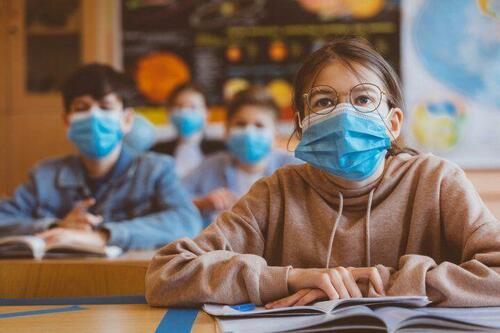Seven Major Effects Of COVID-19 On Parents, Students, & Schools
Authored by Bruno Manno via RealClearEducation.com,
COVID-19 disrupted American K-12 education, with calamitous consequences for young people. Here are seven realities that resulted from that calamity.
Four describe the tragedy, and three explain what advocates and stakeholders are doing to overcome it.
1. Parents know that there are problems and want new solutions.
More than two-thirds (69%) of parents say that they’re worried their child isn’t on track in school, almost twice as many as the 35% who were worried about this pre-pandemic. Nearly six in ten want schools to continue using statewide tests to show what students are learning so that schools will know where to focus assistance. Nearly two-thirds (63%) of parents worry about their child’s mental health. All this leads nearly six in ten (56%) to want schools to rethink how they educate children and create new ways to teach children.
2. COVID-19 led to much less student learning.
Analysts at the National Bureau of Economic Research (NBER) studied mathematics and reading test scores across the country, tracking what students learned using online instruction compared to what they learned in reopened schools. Online instruction was associated with growing achievement gaps, especially for black and Hispanic students attending high-poverty schools. The average student learning remotely lost the equivalent of 13 weeks of in-person instruction, a gap that reached 22 weeks for students in high-poverty schools. The average student in reopened schools lost between 7 and 10 weeks of in-person instruction. Other studies reach similar conclusions, including one that found pandemic learning loss greater than that experienced by New Orleans students after schools closed following Hurricane Katrina.
3. COVID-19 changed young people’s college-going plans.
The 2022 high school graduating class lived more than half their school time during the pandemic. Nearly 1 in 3 seniors (28%) have changed their post-high school plans since the pandemic began, up from 18% in a spring 2020 survey. Three out of four (74%) seniors report that they want to go to college, though they’re now facing new challenges. There are significant differences across student groups, with seniors who are Hispanic, black, and male less likely to want to go to college than those who were seniors in 2019.
4. COVID-19 affected young people’s mental health.
The Surgeon General issued a public advisory report with troubling information. Mental-health visits for children aged five to 11 increased by 24% compared to 2019, with visits for 12- to 17-year-olds rising almost 31%. The National Center for Education Statistics reports that since the start of the pandemic, 70% of public schools experienced an increase in the number of children seeking school mental-health services, with 76% of school staff voicing concerns about students showing signs of depression, anxiety, and trauma. The General Accounting Office found that during the 2020-21 school year a higher percentage of teachers using online or combining online and in-person learning reported that their students experienced learning difficulties than did teachers in an in-person environment.
There are reasons for optimism. Here are three promising pathways to overcoming the COVID-19 learning calamity.
5. Many parents responded to this calamity by voting with their feet.
Parents enrolled children in new non-public school education settings, shrinking public school enrollment since 2020 by almost 1.3 million students (though some of this decline owes to decreasing birth rates and immigration). Parents enrolled their children in private and parochial schools, micro-schools, and learning pods, with homeschooling reaching record enrollment levels. In particular, large urban districts experienced a significant student exodus, especially those with lengthy periods of remote-only learning. For example, over the last two years, New York City schools lost around 64,000 students; Los Angeles around 43,000 students; and Chicago around 25,000 students.
6. State and local public school leaders are responding to the calamity.
States and school districts have received $190 billion in federal pandemic education funding. Money is being used to implement programs that accelerate student learning, including evidence-based ones like intensive small-group tutoring; competency-based instruction that develops specific student knowledge and skills; summer school; extra instruction in core subjects; lengthening the school year; and offering modest financial incentives and other rewards to students, parents, and teachers.
7. Policymakers are creating new options for parents and young people.
Elected state leaders have expanded school-choice options or created new ones, including open enrollment across school district boundaries, vouchers, tax-credit scholarships, and education savings accounts. This has produced a more pluralistic K-12 system with more educational options for families and students.
School closures produced an education and mental-health calamity for young people. The debate about whether school closures were mistaken will continue. The onus is now with K-12 advocates and stakeholders to do whatever it takes to support families and students in their efforts to make up lost ground.
* * *
Bruno V. Manno, a former U.S. Assistant Secretary of Education, is senior advisor to the Walton Family Foundation’s education program. Some of the research described in this piece was supported financially by the Foundation.
via IFTTT
InoreaderURL: SECONDARY LINK

